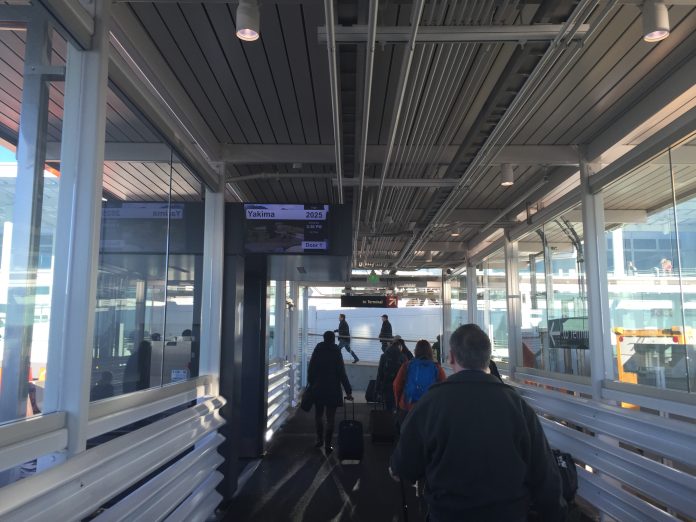Sea-Tac International Airport continues to post incredible passenger growth. In 2018, the airport moved 49,849,520 passengers, just shy of the magic 50-million mark. Passengers counts were up 5.9% year-over-year from 46,934,619 in 2017. For comparison, Sea-Tac saw passenger growth of 2.5% in 2017. According to the Port of Seattle, the growth was driven by a mix of business and leisure travel. International connections also continued to help push up passenger numbers as three new international carriers began service. The airport moved up the rank of busiest airports in America by one slot to number eight.
“The port is a source of opportunity. New routes mean more travel choices for locals, as well as new business and tourism prospects for our entire region,” said Ryan Calkins, Port of Seattle Commissioner. “We are helping local cities and destination marketers make the most of new connections through economic development partnerships and promotional programs. At the same time, we recognize that neighborhoods closest to the airport experience more impacts, so we are expanding our programs to support a healthy environment and healthy communities.”
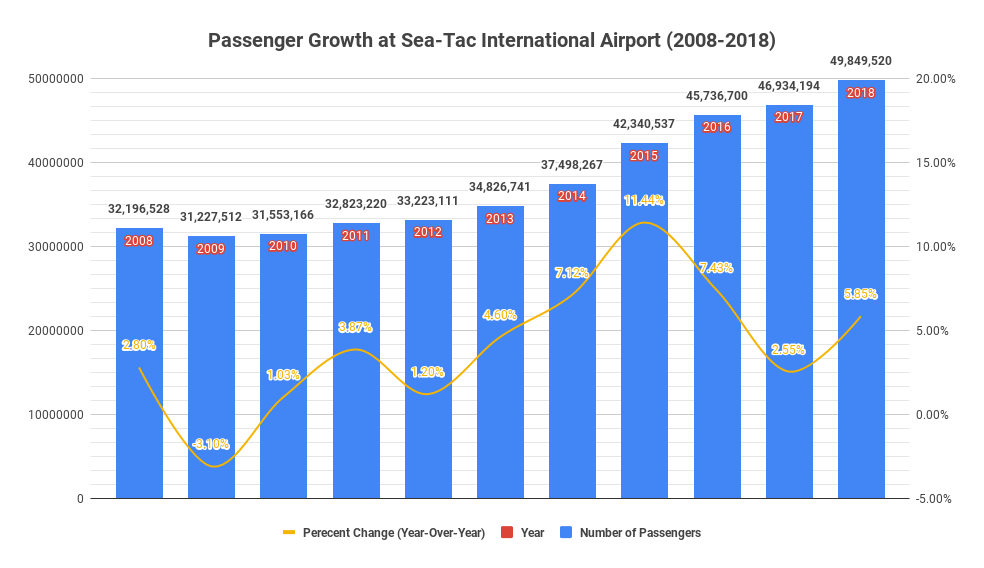
The top destinations for passengers remain Los Angeles, San Francisco, Anchorage, Denver, and Las Vegas. Vancouver, British Columbia, Portland, Oregon, and Spokane also are in the top 12.
Domestic airlines will continue adding service this year. Several have already declared an intention to serve new destinations with Alaska Airlines opening up non-stop service to El Paso and Columbus, Ohio and Southwest Airlines to Milwaukee.
International travel continues to boom, stretch capacity
For the international travel market, Seattle received two new connections abroad. Aer Lingus began non-stop service in May, connecting the Emerald City to the Emerald Isle by way of Dublin. Thomas Cook also launched a connection to Manchester that month. Air France took over the Paris non-stop route from their alliance partner Delta Air Lines in March. Seattle, however, did lose the Cologne/Bonn connection when Eurowings ended service in October. Year-over-year though, international passenger counts were up 5.8% to 5,427,551 passengers.
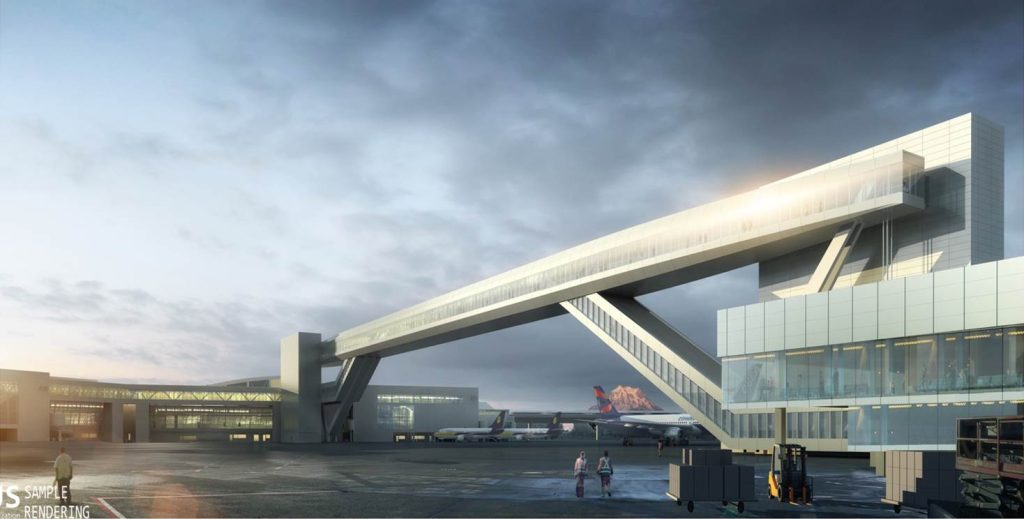
In the year ahead, Seattle will see several other international carriers launch service. At the end of March, Japan Airlines will resume service to Tokyo-Narita, which already has competition with Delta Air Lines and All Nippon Airways. Delta Airlines will also launch a separate Japanese route at the end of March to Osaka. In April, Cathay Pacific Airways will begin flying to Hong Kong. And then in September, Singapore Airlines will restore service to Changi Airport in Singapore, making it the longest non-stop route from Sea-Tac (the Emirates route to Dubai currently holds that distinction). Other airlines could make announcements for other international destinations this year soon.
To support even more international service in the years ahead, the Port of Seattle is actively constructing a new International Arrivals Facility that will facilitate faster processing of international passengers going through customs control. That facility will include a new landside processing facility and baggage claim area as well as a large, controlled pedestrian bridge from the South Satellite to Concourse A. Despite some delays from environmental issues, the facility should open in 2020.
Passenger growth on crash course to overcrowding
Barring a major economic downturn, Sea-Tac Airport will likely blast past 50 million passengers in 2019. That is in spite of Paine Field in Everett opening to passenger flights next month. A total of 30 daily flights, mostly by Alaska Airlines, are planned to operate from the airport. If the two-gate facility is popular, it will prompt calls for further flights and possibly expansion.
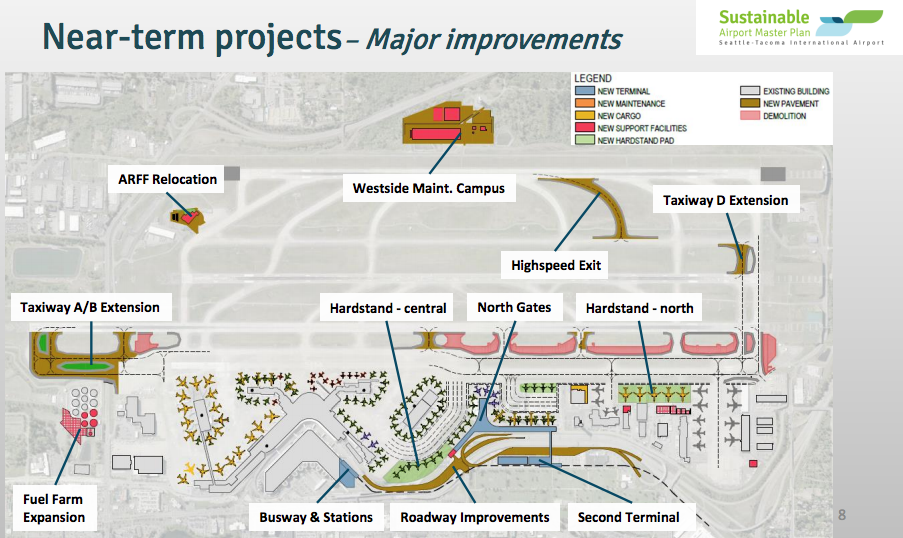
The level of passenger growth is so high at Sea-Tac that it would only take three short years at the current rate to reach planned capacity for 2027, a full five years ahead of schedule. The Port of Seattle has been working through a long-range planning process to identify projects to address passenger growth demands. Strategies that the Port of Seattle has identified to meet that level of demand is a new hardstand facility (which opened in the fall), International Arrivals Facility, and expansion of gates at the North Satellite. It increasingly seems likely that the existing strategies will be insufficient, necessitating other interim improvements like more hardstands.
Looking ahead, the Port of Seattle will likely build an entirely new terminal to the north of Concourse D. While the terminal would eventually directly tie into Concourse D, it would have many of its own landside facilities and transit shuttle to the main terminal area. Building the new terminal and other facilities could help the airport accommodate 66 million passengers by 2034.
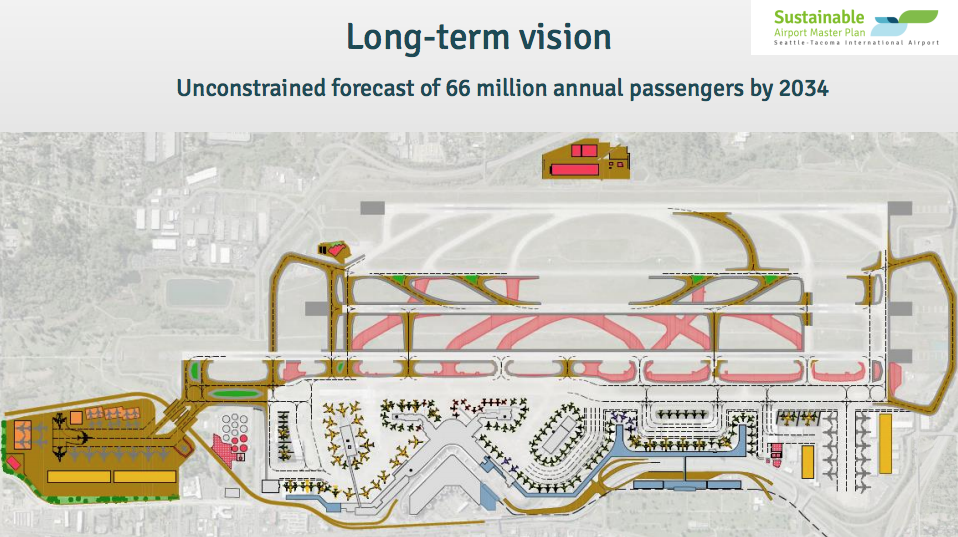
At that point, the airport is expected to largely be tapped out for new growth capacity, meaning that other airports in the area will need to pick up the slack. Another option to help cut down on intercity flights to Vancouver, British Columbia and Portland, Oregon would be investment in high-speed rail, especially if there were superior connections to the airports themselves similar to TGV at Aéroport Charles de Gaulle in Paris.
The Port of Seattle has had to cope with passenger growth by creating a temporary hardstand facility where passengers meet parked planes on the tarmac. Buses connect passengers from a waiting area linked to the D Concourse to the hardstand instead of boarding or alighting from a regular jetway gate. Last month, Sea-Tac also opened the first five of eight new gates at the North Satellite, the next phase of expansion involves closure of one existing gate. These gates exclusively benefit Alaska Airlines since the airline is the sole operator of the terminal. The Port plans to complete the expansion and modernization program in 2021.
Stephen is a professional urban planner in Puget Sound with a passion for sustainable, livable, and diverse cities. He is especially interested in how policies, regulations, and programs can promote positive outcomes for communities. With stints in great cities like Bellingham and Cork, Stephen currently lives in Seattle. He primarily covers land use and transportation issues and has been with The Urbanist since 2014.

